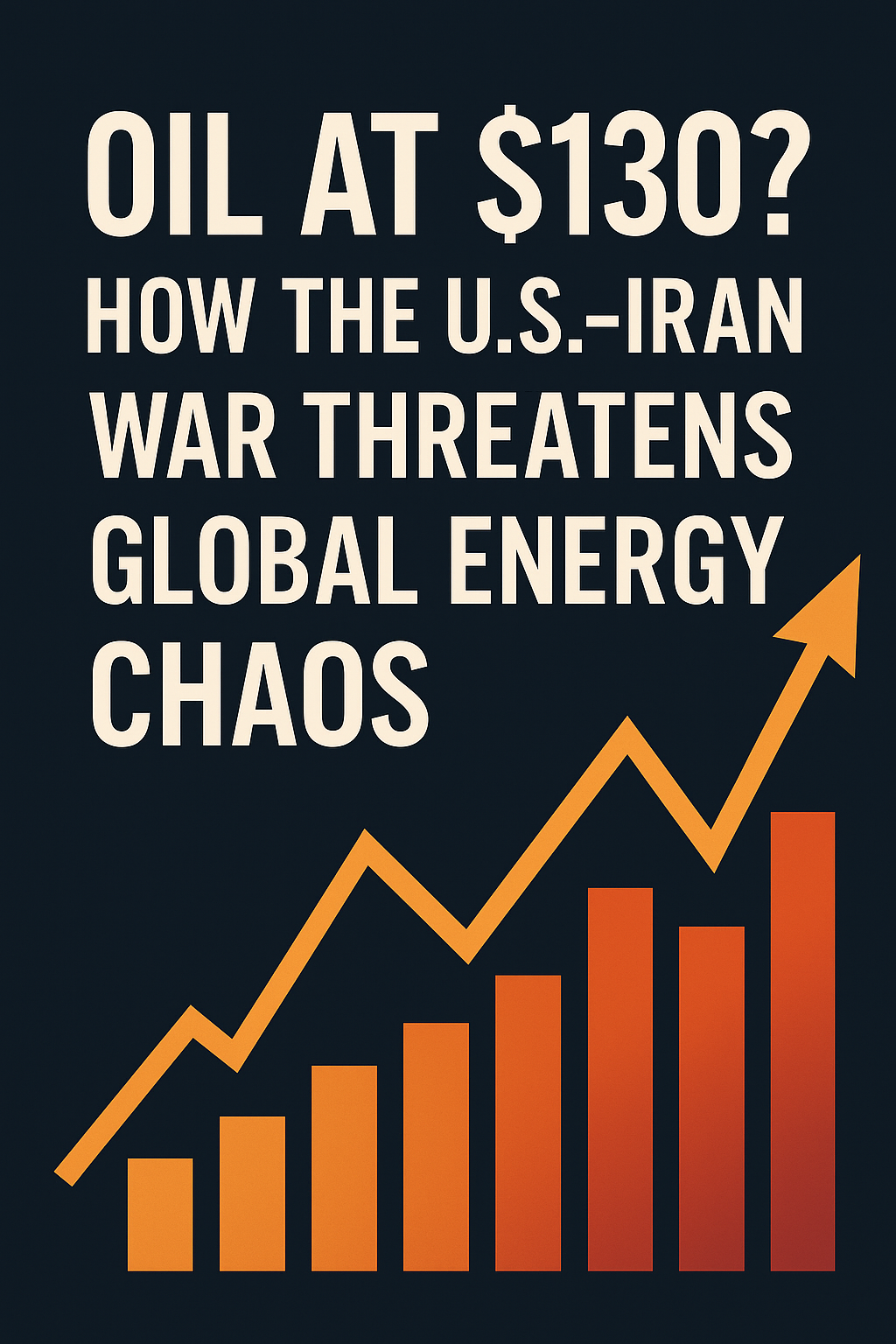War, Oil, and the Global Price Shock
The sudden escalation between the United States and Iran following U.S. airstrikes on Iranian nuclear sites has sent shockwaves through the global energy market. Within hours, oil prices spiked: Brent crude surged by 5.7% to over $80 per barrel, and WTI rose above $75. But this may be just the beginning. With the threat of Iran closing the vital Strait of Hormuz—through which 20% of the world’s oil supply flows—markets now fear prices could skyrocket to between $100 and $130 per barrel.
This blog breaks down what’s happening, why it matters, and what you can expect in the weeks to come.
1. Immediate Oil Price Surge: Panic at the Pumps
Oil markets are extremely sensitive to conflict, especially involving OPEC nations or key transport chokepoints. In the wake of the U.S. strikes:
- Brent crude jumped 5.7%, topping $80/barrel
- WTI rose 4%, climbing over $75/barrel
This is a direct reaction to perceived supply risk. Even before this latest attack, tensions between Iran and Israel had already driven prices up nearly 10% over the past week.
2. Strait of Hormuz: The World’s Oil Lifeline
The Strait of Hormuz is the narrow channel between Iran and Oman through which about 20% of global oil shipments pass. Following the airstrikes:
- Iran’s parliament voted to close the strait (final decision pending approval from Supreme Leader Ayatollah Khamenei)
- If fully shut, experts predict Brent crude could reach $130/barrel
- U.S. gasoline prices could spike by $1.25/gallon, hitting national averages of $4.50, and up to $6 in California
A full blockade would cause major disruptions not just to oil, but also to LNG (liquefied natural gas), compounding the crisis.

3. Retaliation and Wider Regional Threats
Iran has more tools than just the strait. They could retaliate indirectly through:
- Missile or drone attacks on Saudi or UAE oil facilities
- Backing Houthi rebels to disrupt Red Sea shipping lanes
- Cyber warfare or electronic jamming of commercial tanker GPS systems (already noted by the UK Royal Navy)
Any of these moves could create additional choke points in global supply chains.
4. Economic Fallout: From Gas Pumps to Global Markets
Inflation
If oil prices sustain near $130/barrel:
- U.S. inflation could jump back to 6%
- Federal Reserve might be forced to keep interest rates high, further stalling recovery
Recession Risk
A prolonged disruption could:
- Push major economies into recession
- Spark stock market volatility (U.S. futures already dipped 0.6% post-strikes)
Consumer Impact
- Airfare, shipping, and retail prices will climb
- Businesses may delay hiring or expansion due to cost uncertainty
5. What History Teaches Us
Past conflicts involving oil producers show consistent price surges:
| Conflict | Oil Price Spike |
|---|---|
| 1990 Gulf War | +$15/barrel |
| 2003 Iraq War | +$10/barrel |
| 1979 Iranian Revolution | +76% average increase |
These cases underline one truth: geopolitical risk translates directly to real-world energy costs.
6. Factors That Could Limit the Crisis
While worst-case scenarios make headlines, several mitigating factors are at play:
- Iran depends on China for 85% of its oil exports; a full strait closure could hurt its own economy
- The U.S. is more energy-independent today than during past oil crises
- OPEC+ (especially Saudi Arabia) may boost output to stabilize prices
Oil Price Scenarios: A Quick Comparison
| Conflict Severity | Brent Oil Price | U.S. Gas Price Impact | Probability |
|---|---|---|---|
| Limited Retaliation | $85–90/barrel | +$0.25–0.50/gallon | Moderate |
| Weeks of Hormuz Disruption | $100–110/barrel | +$0.75–1.00/gallon | High |
| Full Hormuz Closure | $120–130/barrel | +$1.25/gallon ($6 CA) | Low |
Prepare, Don’t Panic
While the current oil spike is severe, it’s not yet catastrophic. The final impact depends on Iran’s next move, global diplomatic responses, and the duration of supply disruptions.
Investors, consumers, and policymakers should keep a close eye on:
- Supreme Leader Khamenei’s decision on the Strait of Hormuz
- Satellite data on oil tanker routes
- OPEC+ and U.S. strategic reserve responses
If cooler heads prevail and markets adapt quickly, this may be a painful but short-lived spike. But if escalation continues, we could be entering a new era of energy volatility—with far-reaching consequences for inflation, global trade, and geopolitical balance.




